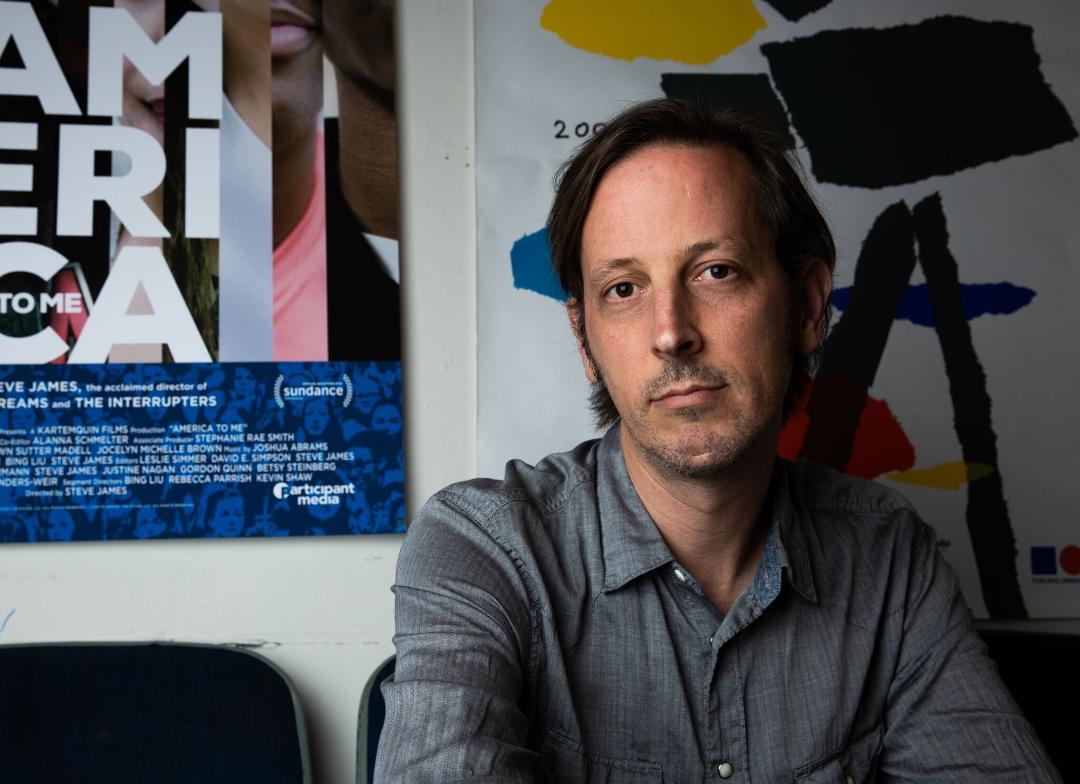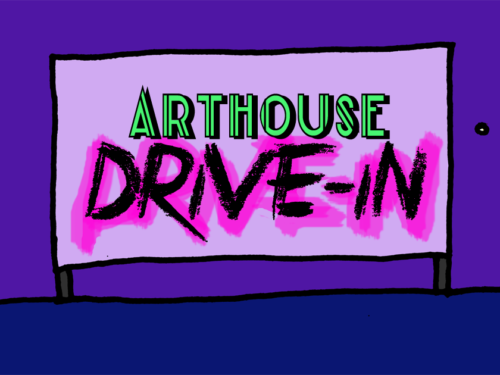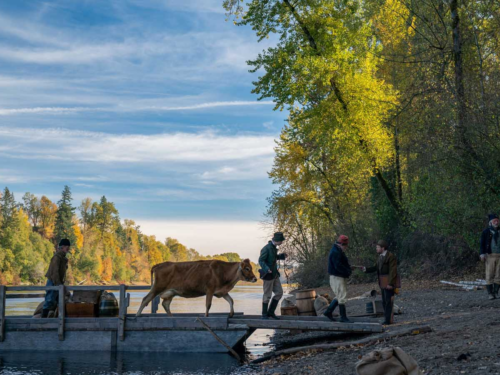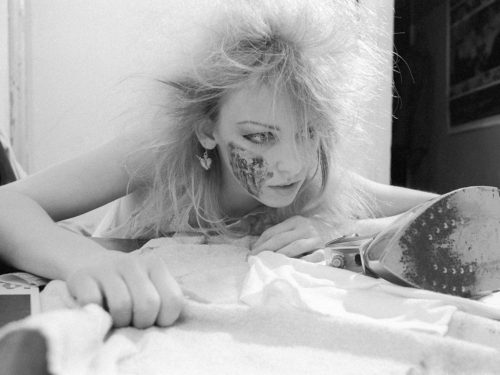Smith’s 2017 feature Mercury in Retrograde is currently streaming as part of the Gene Siskel Film Center’s “Film Center from Your Sofa” series. Bennett Glace spoke with the Chicago filmmaker/critic/teacher about his experience making the film
I first encountered Michael Glover Smith not as a director, but as a fellow cinephile. For more than a decade, he has offered a Chicago-centric look at film history and theory on his blog White City Cinema. Even a quick visit to the site reveals Smith to be a filmgoer and film professor with broad expertise and a deep appreciation for the medium’s history. No surprise then that he’s also a filmmaker of both intelligence and emotional insight.
Mercury in Retrograde (2017), Smith’s second of three features to date, sees the director leave Chicago behind for the picturesque woods of nearby Michigan. There, a trio of couples learn that there are few things quite as stressful as a vacation.
I talked to Smith about the film, which is streaming through Thursday, April 23 as part of the Gene Siskel Film Center’s “Film Center from Your Sofa” series. It might surprise you to learn that the film’s astrological themes did not arise from an appreciation for horoscopes. It shouldn’t surprise you, however, to learn that the film calls on a wide range of influences or that Smith is fueled by the enthusiasm and passion of classroom discussions.
Split Tooth Media: Right off the bat, I have to ask about astrology. I’ll admit I thought about getting cute and building the whole conversation about Mercury in Retrograde around the subject, but I’ll stick with one question. What is your opinion of it? Is it something you take at all seriously?
Michael Glover Smith: Honestly, I think astrology is complete and utter bullshit, but I thought it was an interesting hook to begin a narrative film with. Having the characters have their horoscopes read introduces the idea of foreshadowing. You start to wonder who these people are and whether or not the things you’re hearing about them will turn out to be true.
If you’ll indulge me, it’s like the witches in Macbeth. You start to wonder if these things are happening because they were fated to, if the characters are sort of reverse engineering their decisions to make these things happen, or if it’s all just a coincidence.
Yeah, that’s exactly right. I will say this, though, because I know a lot of people take astrology very seriously including friends of mine and people who are smarter than I am. When I come across horoscopes in the newspaper, the only one I read is my own. While I don’t believe in it, I think it’s at least an interesting way to think more philosophically about who you are and where you’re going.
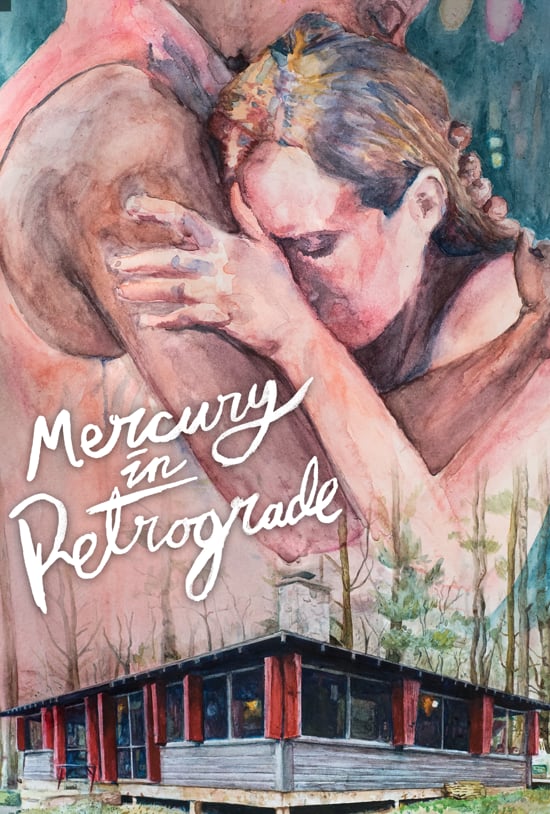
So you’re not a believer in astrology, but you are a multi-hyphenate. How do you think of yourself? Are you a teacher who makes films, a filmmaker who teaches, a critic who teaches and makes films, or something else altogether?
In my mind, all of those things are interrelated. I think of myself as a filmmaker first and foremost, though, because that’s what I studied in school. I was a Film Production major and I started teaching as a way to pay the bills — you know, while trying to make movies in my spare time. So, I would consider myself a filmmaker who also teaches and writes about cinema.
When I say they’re all interrelated, what I mean is that I always try to teach film history and write criticism from the point of view of a director. In both, I’m always trying to put the emphasis on film form. I ask my students, ‘What are the filmmakers doing?’ ‘how are they using mise en scene, editing, cinematography, etc. to create meaning?’ I tell them that nothing they say is ever invalid so long as they can back it up with textual evidence from the film. There’s so much “fan theory criticism” out there that it’s easy to fall into pointless conjecture and speculation.
Between your teaching, filmmaking, and blogging at White City Cinema, it’s safe to say that Chicago is an essential element of your work so far. In Mercury in Retrograde, though, your three central couples leave the city for a weekend getaway in Michigan. Vacation movies are practically a genre unto themselves. Did you take inspiration from any in particular? Maybe I’ve just got Eric Rohmer on the brain, but I thought of La Collectionneuse and Claire’s Knee.
That’s interesting that you say that because Rohmer is a huge influence on me. The film I made right after this is called Rendezvous in Chicago (2018) and it features the lead actress from La Collectionneuse. That was an explicit homage, but the biggest influence on Mercury in Retrograde was actually Roberto Rossellini’s Voyage to Italy, one of my favorites.
In my opinion, Rossellini is the greatest of all Italian filmmakers and that movie in particular is the birth of cinematic modernism. It’s kind of a plotless examination of this bourgeois English couple who travel to Italy to settle the estate of the husband’s uncle. They’re not really on vacation, but they do travel to another country and they do have a lot more free time than they’re used to. They’re away from work and their daily routines for the first time in years and, as a result, they have to confront all sorts of things they’ve been sweeping under the rug.
My first film, Cool Apocalypse (2015), had a lot of parallel editing between two couples and I wanted to take that a step further. I wanted to take three couples out of their comfort zone and explore their dynamics. I think vacationing does really interesting things to the psyche.

We actually just talked about something similar on Reel Rap in our episode on Monsieur Hulot’s Holiday. That film really gets all the hard work that goes into relaxing and all the stressors that only seem to exist when you’re trying to get away from everyday stress.
That actually brings me to the other big influence — National Lampoon’s Vacation by the late, great Chicagoan Harold Ramis. I was probably 9 years old the first time I saw it and it was a really formative experience for me. During the editing process, Frank [V.] Ross told me that his biggest influence was an ’80s Rodney Dangerfield comedy called Easy Money. That really blew my mind and we started talking about all of these ’80s vacation comedies. A lot of them are really bad, but Vacation is truly great and surprisingly dark. It gets at what you’re talking about, how stressful vacationing can be. There’s something so overwhelming about feeling obligated to have fun.
Was there any particular significance to the location in Michigan or does it stand in for a general “country” setting?
The choice was significant, at least personally. In the initial draft, the characters were going to travel to North Carolina where I’m originally from. I realized pretty quickly that it would be more cost effective to shoot somewhere that was within driving distance of Chicago. We settled on this part of Southwestern Michigan because my wife and I had gone there on vacation. Our cabin wasn’t nearly as scenic as the one in the film, but it did put the idea in my mind. Personally, I cannot write a scene unless I can see the location in my mind.
The film’s look is one of the things that really sets it apart. Could you tell me more about working with cinematographer Jason Chiu? His work on Henry Gamble’s Birthday Party is really incredible.
I was a big fan of that one, too. Watching it is what made me decide to approach him for Mercury in Retrograde. It’s shot in the 2.35:1 aspect ratio and has such a big cast, so many characters on screen at a given time. I loved how he used the whole frame to keep so many different characters in his shots. I knew that Mercury was going to be about six people and that I didn’t want a lot of cutting from couple to couple or face to face. That meant they’d often be on screen together. He seemed like a perfect fit.
I’m the kind of director who always puts together a very detailed shot list, but my DPs are the real experts. I count on them to come back to me with their ideas and Jason definitely did. It was a true collaboration.

Where did you both find inspiration for the look of the film?
The interesting thing about Jason is that he’s not a cinephile and he’s a pretty young guy. I’m 44, I was in my early 40s when we made the film. He was in his late 20s, so we’re two different generations. When I went to film school in the late ’90s, everything was shot on 16mm and everybody wanted to be a filmmaker who made films for the big screen. Nowadays, when people come out of film school, it’s pretty common for them to not watch all that many movies. If you’re training to be a cinematographer, there’s less and less chance that you’ll be shooting traditional cinema. More likely, you’ll be getting involved in TV or music videos or web series or commercials.
Collaborating with Jason was a lot of fun because we both got to show each other a lot of stuff we hadn’t seen. After he came on board, I brought him over to my condo and just pulled out a stack of Blu-rays and DVDs. We looked at Certified Copy for the driving scenes, Robert Bresson’s A Man Escaped, Mike Leigh’s Another Year. The bar scenes in Jackie Brown had a big influence on the bar scene in Mercury, particularly the blood red lighting. I showed him clips from Mad Max: Fury Road and Letters from Iwo Jima to talk about the color saturation I wanted for different scenes. He would come back to me with references of his own like music videos or still photographs. I had never watched Downton Abbey but he was a big fan, so we talked about that.
Ultimately, the collaboration worked because we were on the same page about these kinds of references. It was never about merely paying homage to a film or filmmaker. We were both committed to understanding why we shot things a certain way, how that served a character or the story at a given moment.
To stay on the subject of collaborators, I wanted to talk a little more about the film’s editor Frank V. Ross. You might have seen that he’s a particular favorite of the Split Tooth staff. How did he get involved with the film? I assume you were familiar with his work as a director?
I had never met him prior to interviewing him to edit the film, but we had emailed back and forth and I had seen his films. I think we first got in contact when I invited him to screen Bloomin’ Mud Shuffle at a pop-up festival I was programming. It was Shane Simmons — the producer of Mercury who also plays Wyatt in the film — who had the idea to reach out to Frank about editing the film. It appealed to me immediately. Though we’re different in a lot of respects, his films convinced me that I could trust him to edit mine.
Frank and I both favor character-driven stories, but a lot of classically-trained editors are taught to cut for plot. They’re taught to be ruthless in eliminating anything that doesn’t drive the narrative forward. That’s where the phrase “cut to the chase” comes from. Where I might have to really explain my philosophy to another editor, I knew Frank wouldn’t be afraid to let things play out more slowly and let the viewer just hang out with the characters.

While it lacks a chase, Mercury does have its own dramatic climax. The men and women are split into groups and both sides have these really intense, cathartic conversations. For the men, however, personal revelations only come after they’ve gone through the motions of a “book club.” They first use Dashiell Hammett’s The Glass Key to talk about themselves without really talking about themselves. I’m interested in the decision to draw this contrast. Do you find men are more likely to use art as a way of covertly discussing emotions?
Absolutely, and that scene was where the film started for me. I knew I wanted to cut between a group of men having a conversation like this and a group of women having a very different conversation to examine the differences in how they articulate their emotions and relate to one another. The process of writing became a process of getting to that conversation.
Even in the 21st century, I don’t think men are really socialized to open up to one another. It seems like it’s often easier for women who barely know each other to talk about their emotions than it is for close-knit groups of men.
Outside of an academic context, I think heteronormative pop culture has trained me to see book clubs as stereotypically feminine. More than one sitcom has an episode where the matriarch joins a book club and learns they don’t really talk about the book. I thought it was interesting that they seemed to both embody and subvert gender stereotypes. Did the “book club” — as it exists in the popular imagination — ever cross your mind?
It’s actually kind of incidental that they’re talking about a book. I picked the book itself carefully, but they could have been talking about sports, politics, anything that would’ve kept them from talking about themselves and their relationships directly.
From the beginning, I wanted Saturday to function like the second act in a three-act play and I wanted it split into two sequences that would juxtapose the men and women. I knew the first, in the morning, would include physical activity and the second, in the evening, would involve intellectual activity.
I’ll admit, I was interested to see that your characters don’t discuss a film. Too on the nose?
Exactly. Though I’m a cinephile myself, I don’t really enjoy seeing a lot of explicit film references in movies. More often than not, it just just feels like the director is trying to be clever and showing off. That’s not to say it’s always bad. When someone like Godard does it, it’s not superficial. He’s actually interrogating film history and deconstructing film language in the same way that someone like James Joyce deconstructed the written language. I’m not Godard, obviously. I’m more comfortable with literary references.

Who are some of your literary influences?
The biggest are probably Modernist writers who experimented with form. People like Joyce or Faulkner, who’s probably my favorite American writer. Virginia Woolf is another fantastic one. They’re all known for stream-of-consciousness narration and finding surprising ways to use words.
It wasn’t until after I finished making Rendezvous in Chicago that I realized all three of my features have a climactic monologue. There’s just something about long monologues and lots of dialogue that I find appealing, especially when they’re not too naturalistic. I think a lot of micro-budget filmmakers can limit themselves by making everything ultra-realistic. I like reading and writing dialogue that’s a little more heightened and poetic.
I think you find a good balance. The dialogue is never dull, but it never forces you to ask if every character is studying for the SATs.
Thanks. It’s funny because where I tend to prefer writing more heightened dialogue, actors tend to prefer things be as naturalistic as possible. They want every line to sound like something they’re saying off the top of their heads. We end up kind of meeting in the middle.
I’m interested to learn more about how your teaching and filmmaking lives intersect. Do classroom discussions, directly or indirectly, ever find their way into your work? How has teaching affected your approach to making and watching films?
Teaching very directly influenced how I make films. I wasn’t really doing any directing for most of the 2000s. I really drifted away from filmmaking after I graduated from grad school in 2004. It was the process of teaching and of talking to my students that got me excited about it again. I started to think ‘maybe I should give it another try.’
As far as the classroom finding its way into my films, I don’t think it’s anything specific so much as a general excitement. Sharing the excitement of great cinema with my students really energizes me and inspires me to keep going.
I want to focus on the film’s closing voiceover. As the one relative outsider among your characters, Peggy at times functions like the audience surrogate. She’s learning about the other couples, even learning about her new boyfriend, alongside us. That final voiceover, however, seems to make her into something more. By bringing us forward in time, she becomes an almost omniscient, authorial presence. It had totally slipped my mind that she’s the one who reads the horoscopes at the beginning and kind of sets the plot in motion. Did you see her character as standing in for an author or director?
It was more of the former. You’re right to suggest that her outsider status makes her an audience surrogate. We’re getting to know these characters at the same time she does, but I can see why’d you think of her as an author or director. Even though screen time is split more or less evenly, there’s the sense that we’re experiencing things as Peggy perceives them.
Some people don’t like the voiceover. They think it’s unearned because she’s no more special than the other characters. I think if you’re watching closely and correctly you’ll recognize that she’s the heart of the film. The characters represent a diverse spectrum of personalities and she’s the most perceptive and reflective. It’d be a much different film if any of the other characters were in her position of giving that opening and closing narration.
Mercury in Retrograde is currently streaming on Amazon Prime and Vimeo
Follow Bennett and Split Tooth Media on Twitter
(Split Tooth may earn a commission from purchases made through affiliate links on our site.)

